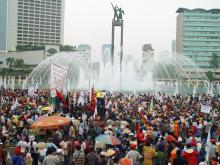Atlanta Centennial Olympic Park

Atlanta's Centennial Olympic park, to me, represents the convergence of global and local forces into one space. A city which was originally based on Southern railroad tracks is one of the most diverse in the South. The park was built when the city found out it would be the host to the 1996 Summer Olympics. The city was then the location where nearly every nationality in the world would meet together to celebrate athletics and diversity. However, I remember the moment, even though I was young, when chaos did ensue. The apparent order and power of the city was broken down by a bombing which left the city and the world shook. To me, this space represents the narrative of order, power and chaos which is a global city.














